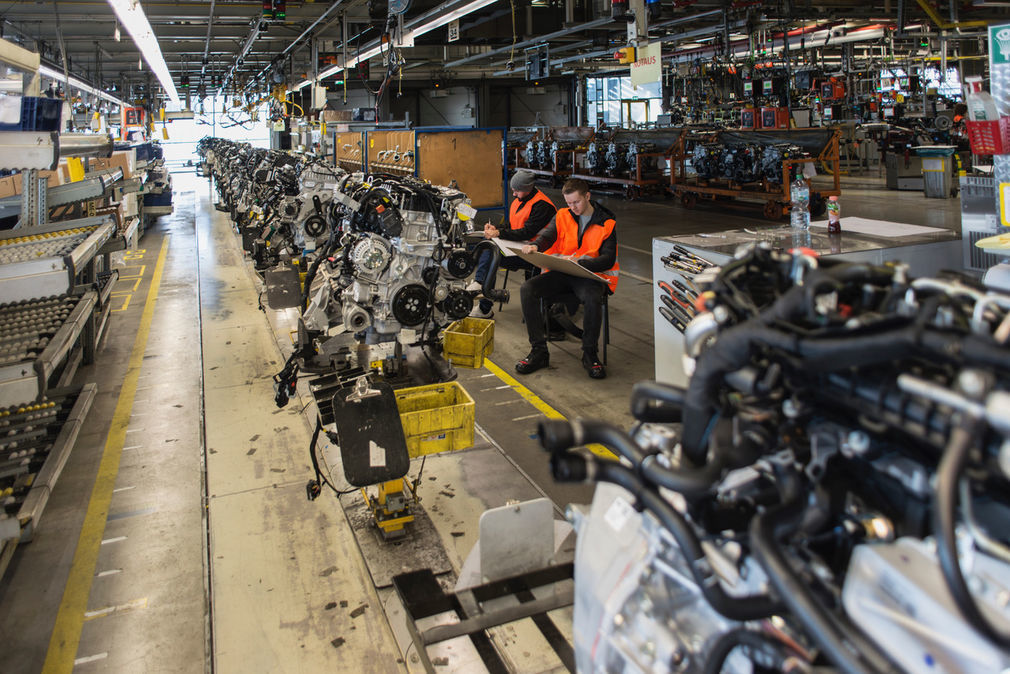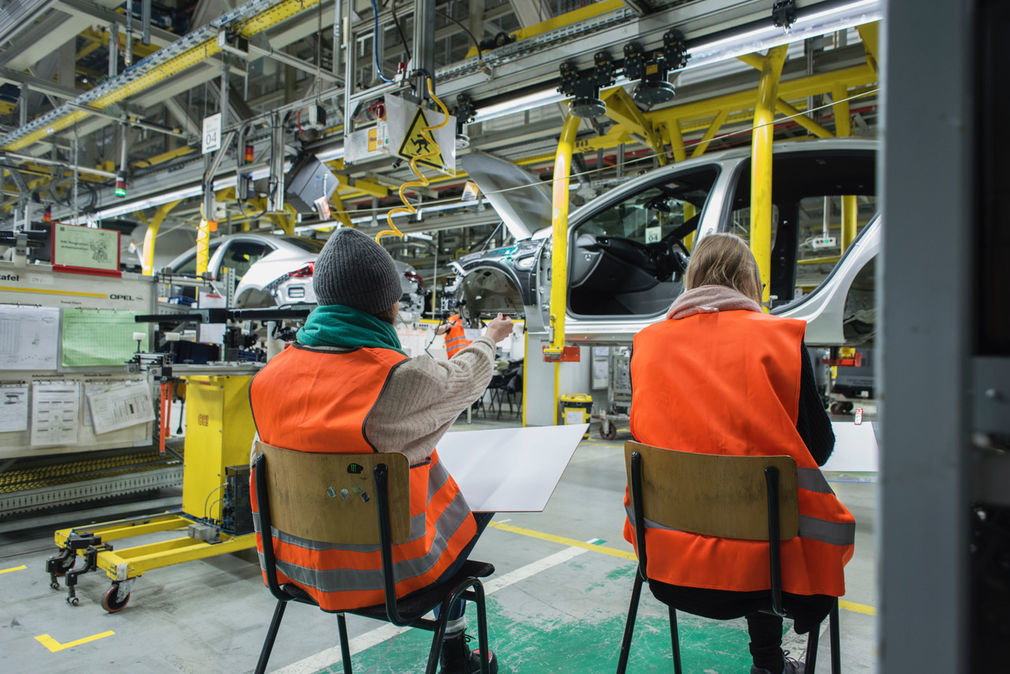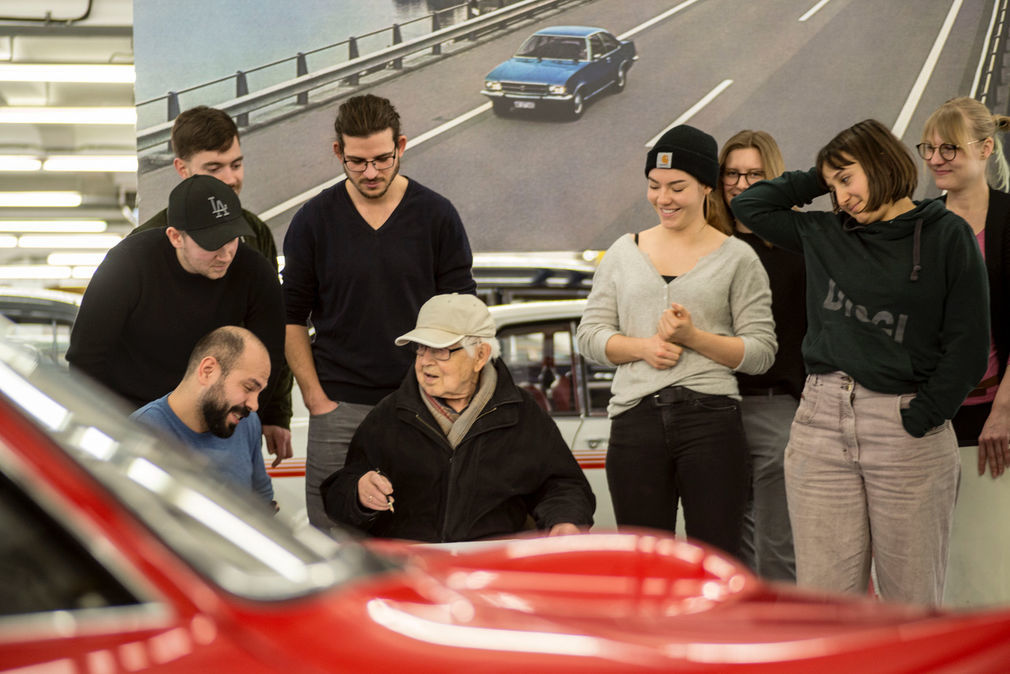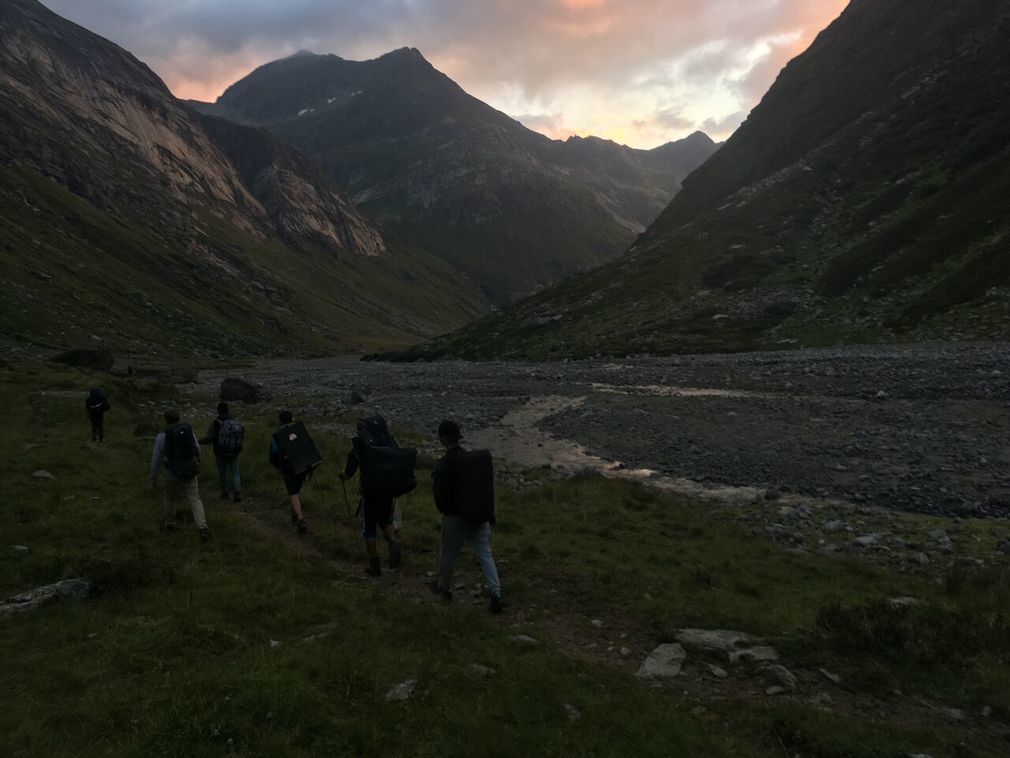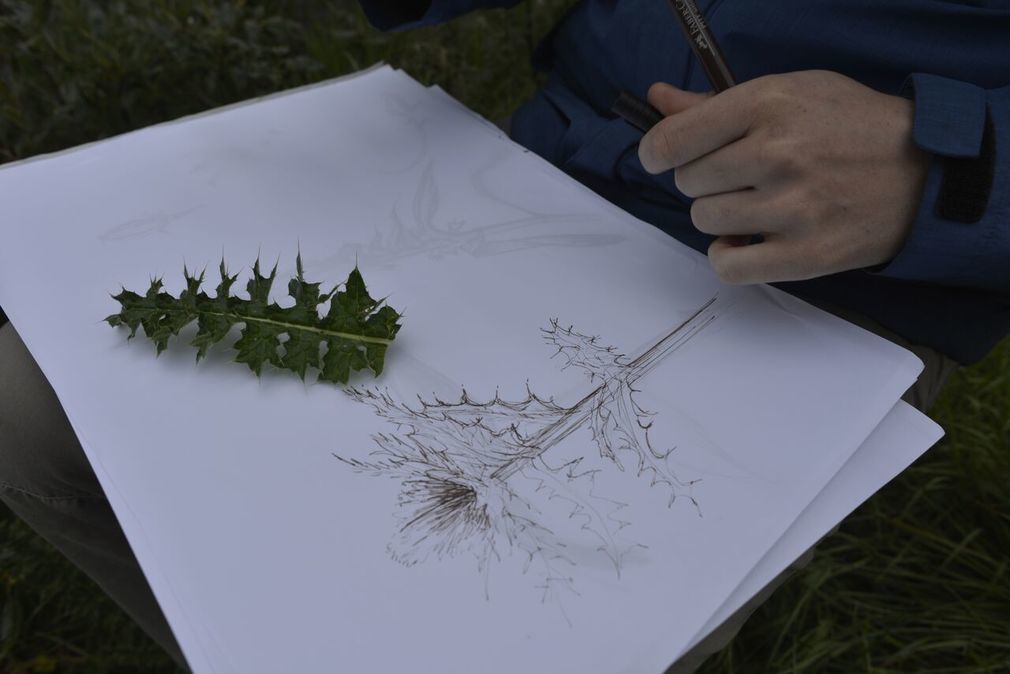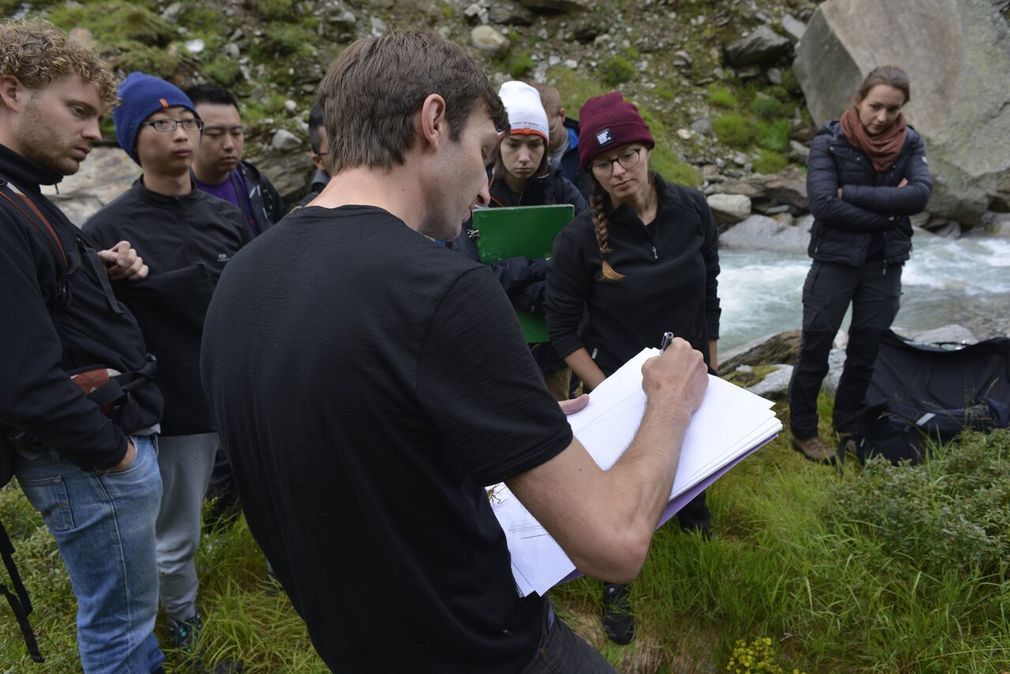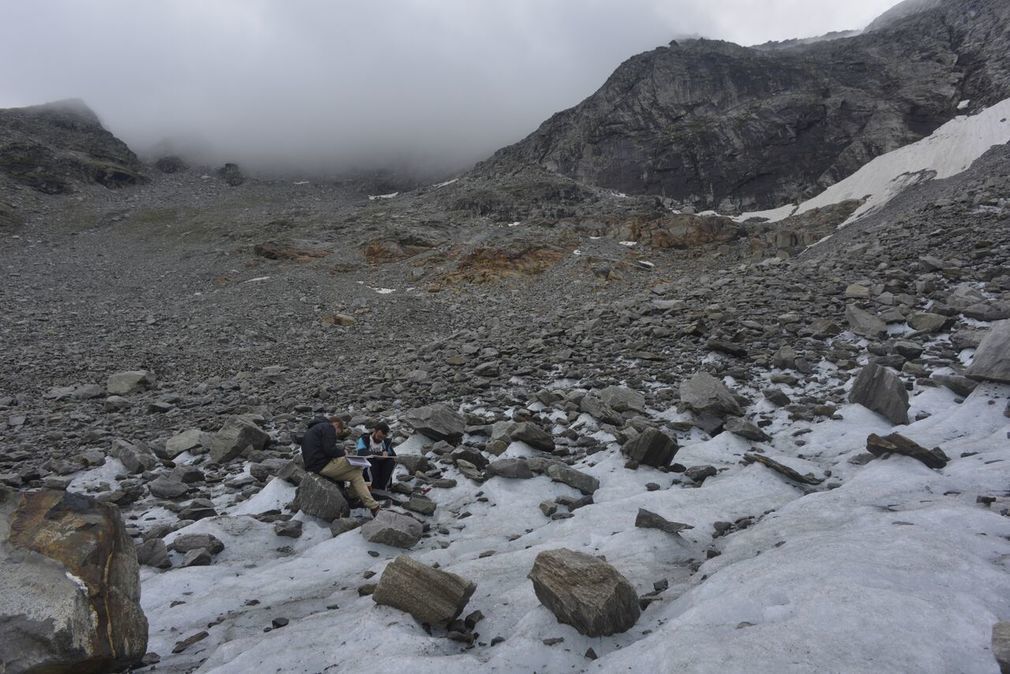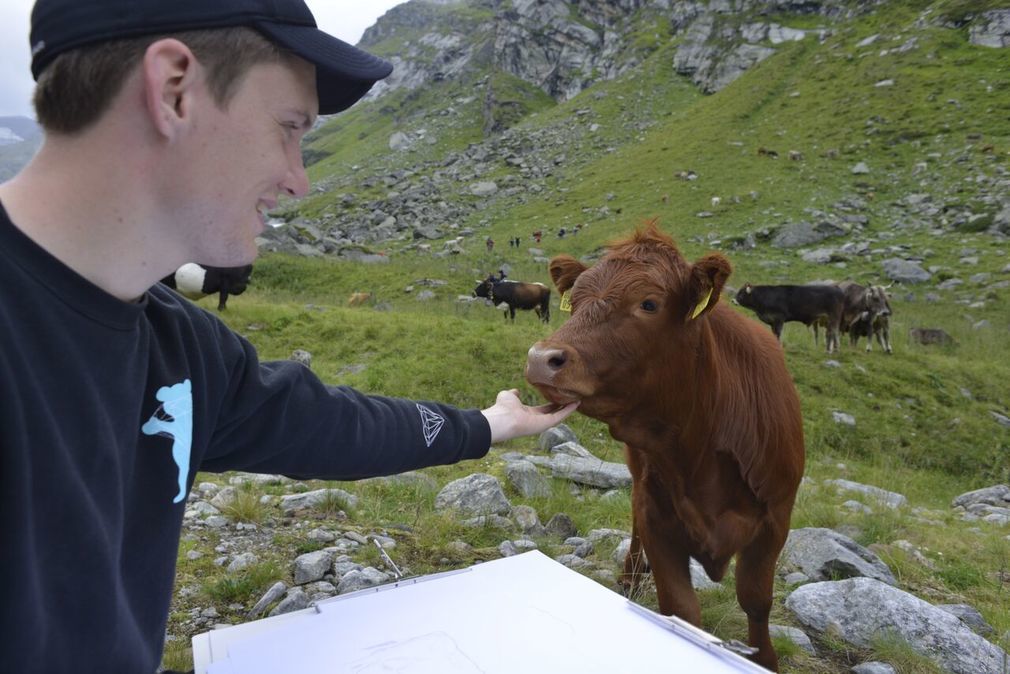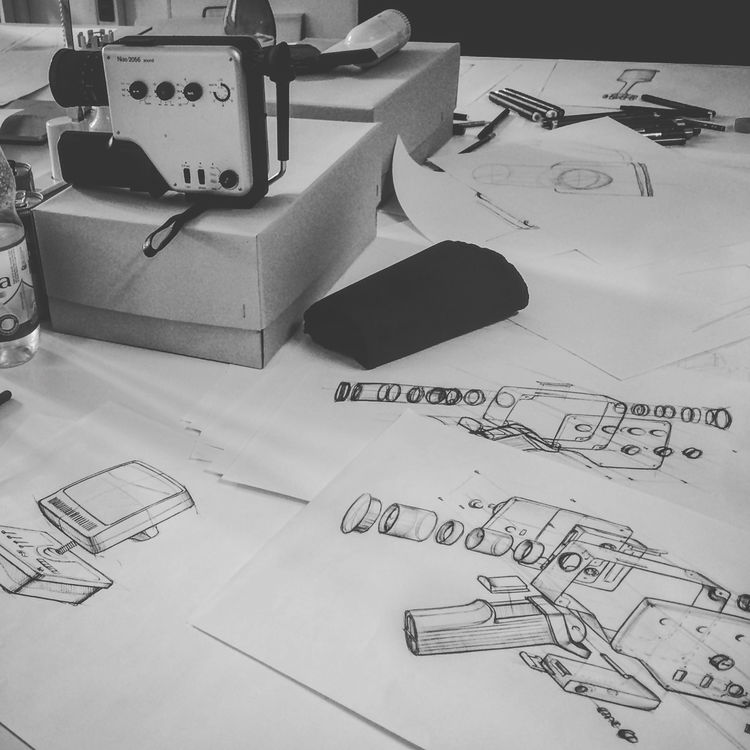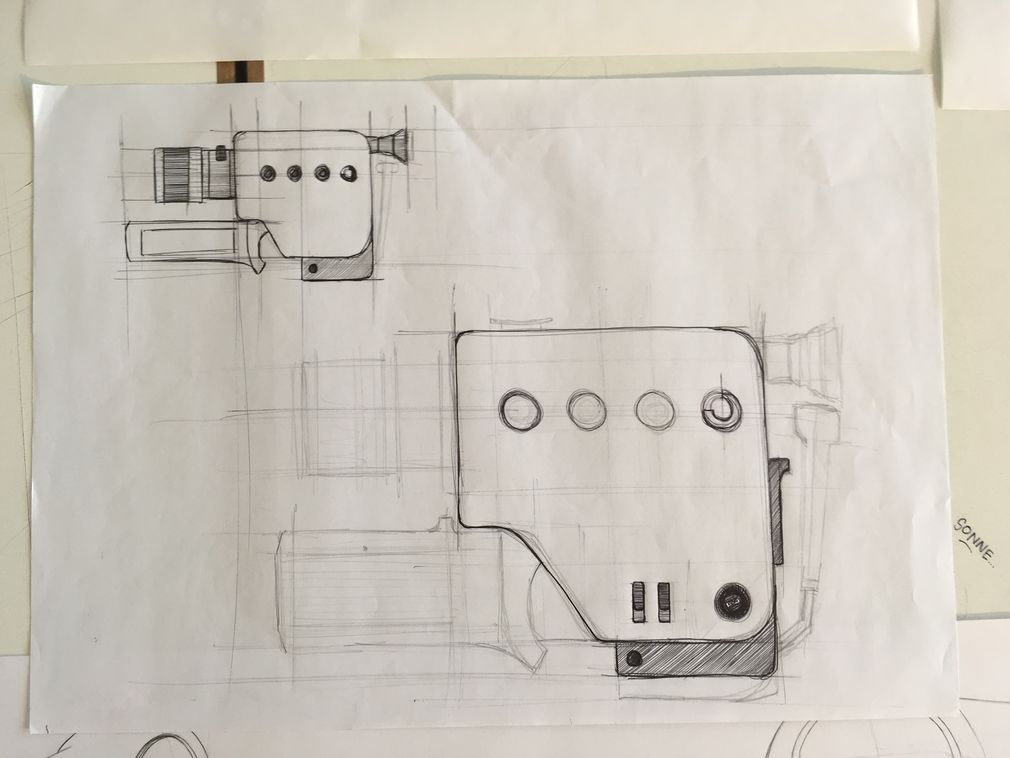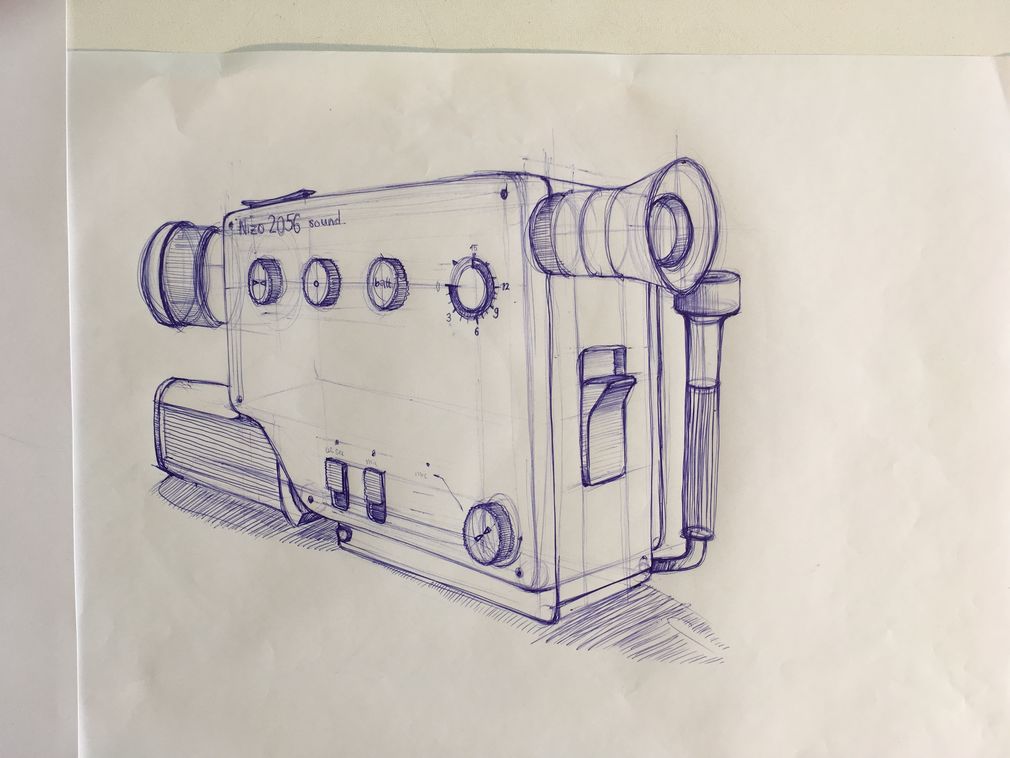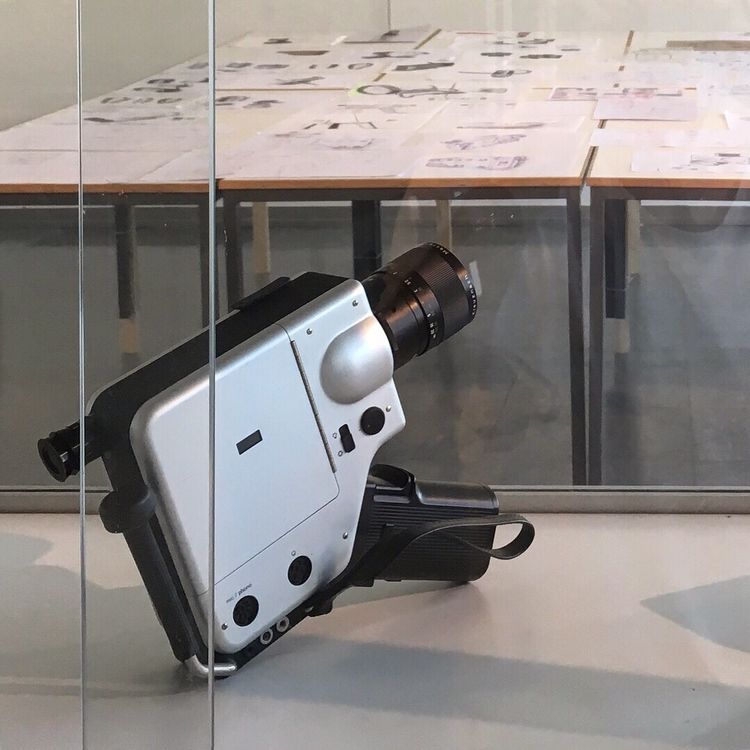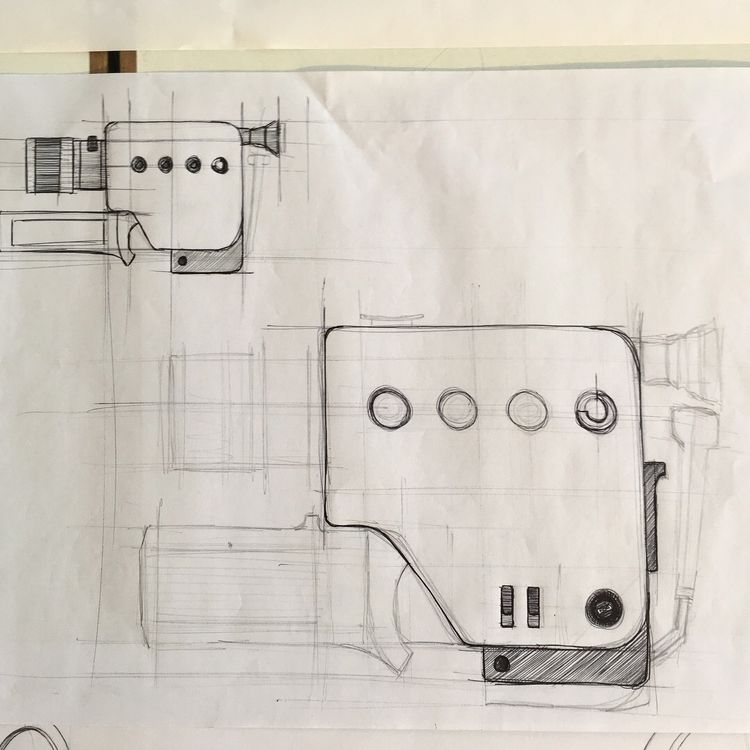Drawing
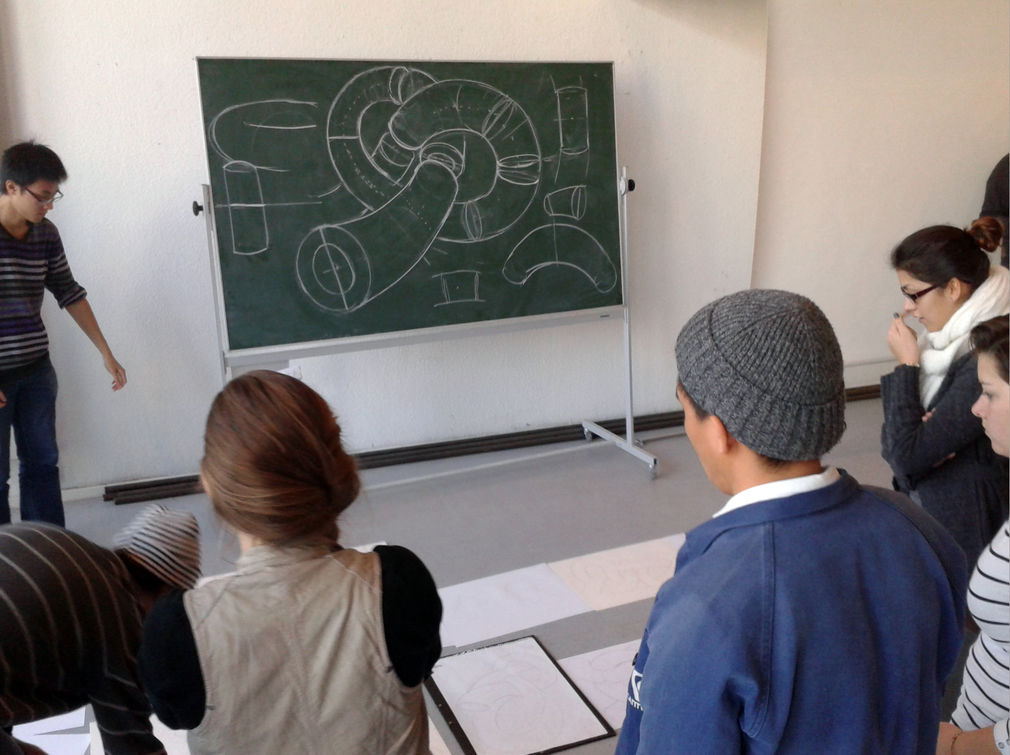
Teaching in the 1st semester
Dipl.-Des. Konrad Regel
Funktion
Lehrbeauftragte
Foundation course
The ability to reproduce spatial images that are products of the imagination is one of the most important elements of product design. What can prove useful, alongside being capable of creating computer-assisted images, is the ability to show spatial relationships by means of rapid, freehand sketches using the direct, analogue medium of pencil or pen. However, in product design, the drawing skills required go far beyond a proficiency with graphics. Both during studies and in professional life high demands will be made on former students’ powers of imagination, their feel for proportions and their ability to gauge distances accurately. This capability is developed and schooled in drawing and more particularly in perspectival drawing.
Particularly these days, when the image is more present than it was ever before a lack of basic knowledge and competence in interpreting images is often to be found in designs for both analogue and digital spatial and perspectival images. Many digital spatial simulations suffer from a lack of composition, badly chosen viewer perspectives, extreme angles and no understanding of how to orchestrate light. What I expect from analogue spatial drawings in which what we are looking at is the relationship between space as it is seen, spatial visualization and the image, is the ability to promote an awareness of pictorial quality, particularly but amongst other things in computer-assisted image design.
The objective of the theory taught in the first year is to assist students as they acquire basic skills in spatial drawing, enabling them to assess their own drawings and to correct them themselves, as well as to practice spatial perception, spatial visualization and the portrayal of space.
In the first year of studies in Product Design, freehand drawing will be supervised and taught in weekly tutorials.
Project for main course of studies
Produktion Material Design
Zeichnen im Opel Werk
Vom rohen Blech zur gepressten Außenhaut, verschweißten Rohkarosserie und Beschichtung: Design-Studierende der HfG beschäftigten sich im Stammwerk in Rüsselsheim zeichnerisch mit den Produktions- und Montageschritten eines Opel Automobils.
Im Laufe einer Woche besuchten die Teilnehmer_innen verschiedene Betriebsbereiche des Werkes: das Presswerk, das Rohkarosseriewerk, die Lackiererei und die Fertig- und Endmontage. Weitere Stationen waren die Opel Classic Werkstatt und das Altwerk. Mit Linien-, Schraffur- und Marker-Techniken wurden Formen, Konstruktionen und Prozesse abstrahiert.
Im Gespräch mit dem Automobildesigner und HfG-Absolventen Erhard Schnell wurden die entstandenen Zeichnungen besprochen und die Bedeutung der Zeichenwerkzeuge im Entwurfsprozess diskutiert.
Das Projekt wurde vom HfG-Dozenten Konrad Regel initiiert und betreut. Die Realisierung erfolgte in enger Kooperation mit der Opel Automobile GmbH.
Natur Forschen Design
Exkursion nach Graubünden
Im Rahmen des Seminars Zeichnen II im Fachbereich Design setzten sich 16 Studierende auf einer Exkursion mit dem alpinen Raum und der Natur auseinander. Sie beobachteten, identifizierten und sammelten designrelevante Themen und forschten mit dem Medium der Zeichnung. Mögliche Themenfelder waren konstruktive Verbindungen, modellierende Prozesse, übergroße Volumen und andere gestaltbildende Prinzipien in der Natur.
Während der Exkursion wurden plastische und schematische Darstellungsmethoden aus dem Design und der Architektur an natürlichen, ungestalteten Objekten vermittelt. Ausgangspunkt war die urige SAC Länta Berghütte in den Graubündner Alpen (Schweiz) auf 2090 Metern über NHN. Auf der Hütte gab es weder Strom, noch Handyempfang oder warmes Wasser, dafür aber gutes Essen, Hintergrundwissen zur Umgebung und viel Zeit zum Zeichnen.
Ergänzt wurden die selbstständigen Studien durch Exkursionen in die nähere Umgebung, z.B. in das Wasserkraftwerk Zervreila, zum Länta Gletscher und Furrgelti Pass, zu den Kühen der Alp Lambertschalp und zum Dorf Vals.
Präzision Linie Design
Zeichnen in Kooperation mit dem Museum Angewandte Kunst Frankfurt
Im Seminar wurden Produkte in ihrer Form und Funktion mit verschiedenen zeichnerischen Mitteln analysiert und dargestellt. Geräte der der Firma BRAUN der Sammlung des Museums Angewandte Kunst Frankfurt sind Ausgangspunkt der Studien.
Mittels maßstabsgetreuer Handzeichnungen sowie serieller Material- und Texturstudien sollte an prägenden Objekten der Produktgestaltung dem Entwurf nachgespürt werden.
In Übungen waren die Komplexität der Formen und Funktionen zu erfassen, Arbeitsweisen und Strategien zu entwickeln und räumliche Zusammenhänge präzise wiederzugeben.
Traces
Marianne Pforte
Traces
Compact seminar Drawing II (2014)
From March 10-21, 2014, students from the Product Design department were guests at Frankfurt Zoo as part of the compact seminar Drawing II Traces . What we mean by traces in this context is, over and beyond the trail left by an animal, any traces of activities, anything left behind (scraps of food, feathers, skin) as well as invisible traces in time and space (e.g. patterns of movement). Each of the 11 participants focused on only one kind of animal, showing processes taking place in time and space using different methods of portrayal such as manual drawings, photography and video. What resulted was, in a manner of speaking, a portrait of the things that are normally invisible to visitors to the zoo and its staff. The foyer of the Borgori Woods in the new Great Ape House served as the students’ workplace, place of retreat and exhibition space.
In cooperation with Frankfurt Zoo
Transliquid
Transliquid
Structures of moment (2011)
Transliquid II – Structures of moment followed on from the 2010 compact seminar Transliquid – between liquid and solid, but covered more extensive topics. The methods used and the course of events correspond to those in the previous year’s seminar. The participants had the opportunity to subsequently further explore the approaches to design they had discovered in the seminar at both universities.
The subject of this seminar was dynamic equilibrium and the maintenance of shape. Organismic processes occur in a liquid medium, with both constant energy expenditure and permanent material exchange taking place. Organic systems display a flowing balance and are only capable of temporarily existence in certain circumstances. In this compact seminar, ephemeral structures were looked for in all kinds of states of aggregation and systems, the kind that only come about under the influence of particular factors such as temperature, flow or pressure and are possibly only stable under these given conditions. This seminar focused on a wide range of matters and was something between nature study, a material experiment and a search for the right shape.
In this seminar the students were requested, as far as possible, to desist from activities requiring a high degree of advance planning and also to view the processes of change of shape and substance set in motion by only a small number of stimuli as a design factor, amongst other things, in their progress over time.
Interdisciplinary, 12-day compact seminar with students from Hochschule für Gestaltung Offenbach (Product Design) and the Frankfurt University of Applied Sciences FRA-UAS (Architecture) at Senckenberg Museum of Natural History Frankfurt/Main. In cooperation with Prof. Markus Holzbach (HfG)
Transliquid
Between liquid and solid (2010)
Unlike the situation in human society, in organic nature, things are not the result of advance planning which takes account of efficiency and constructional logic. Hardened structures occur simultaneously and in association with soft structures, often bridging hydraulic systems, and are to be found in the flowing transitions between liquid and solid states of aggregation. In Transliquid, an experimental seminar along very free lines, the genesis of carrying, supporting and enveloping structures was investigated on all kinds of materials in the transition between liquid and solid states of aggregation and experiments conducted on hardening processes in various materials. This led to the production of the kind of multidimensional structures, across different states of aggregation and different systems, that at best boast the characteristics of hard, soft and liquid states of aggregation and that combine all three as composite characteristics.
Because this two-week compact seminar was conducted in a special exhibition room at the Senckenberg Museum of Natural History participants were able to work in the direct proximity of the objects on view and had to contend with visitors to the museum and staff at the Senckenberg Research Institute. There was a selection of original preparations from the museum’s collection and a number of organisms from Frankfurt Zoo’s collection of exotica available for closer inspection. Throughout the seminar the room was open to the public. Talking to museum visitors, the scientists there and the press was one of our central concerns. The participants were called upon to question and to talk about their work. The seminar was complemented by a lecture by Dr. Bernd Herkner, the museum director, on the subject of “The development of the vertebrate body and the soft body movement mechanism”.
For the duration of the seminar, the exhibition room at the museum was reinterpreted as an artists’ workshop. The room was equipped with continuous black partition walls, the entire floor was covered over and the following supplied: two large work surfaces, a preparation table, a literature table, a food table and chairs to sit on. Material was brought in as required. Over the course of the seminar the proliferation of work realized was deposited or hung on all surfaces, transforming and heightening the atmosphere in the room. At the end of the seminar a closing event was held in this exhibition and work room for members of the university and the museum.
The students were given the opportunity of going into more detail concerning the approaches discovered in Transliquid with Prof. Markus Holzbach at HfG Offenbach or Prof. Claudia Lüling and Prof. Carsten Rohde at FRA-UAS. Transliquid should be seen as part of a wider project devoted to the interdisciplinary and experimental approach to shape, material and construction. Continued cooperation is planned with the Senckenberg Research Institute and Museum of Natural History.
Interdisciplinary, 12-day compact seminar with students from Hochschule für Gestaltung Offenbach (Product Design) and Frankfurt University of Applied Sciences FRA-UAS (Architecture) at the Senckenberg Museum of Natural History Frankfurt/Main. In cooperation with Prof. Markus Holzbach (HfG)
Transliquid
Animal shapes
research and drawing (2009)
The ten-day seminar Animal shapes/ research and drawing was held on FRA-UAS premises in March 2009 with 14 students from HfG and FRA-UAS, using preparations on loan from the Senckenberg Research Institute. The seminar was advised by the head of Senckenberg, Dr. Bernd Herkner, who also delivered a lecture. This seminar was about committing to paper and developing the basic characteristics of the animals investigated whilst maintaining the original context of the figures. For the length of the seminar, the classroom for drawing at FRA-UAS was reinterpreted as a place of biological research. All students were allocated a table with a lamp and their own preparations. A literature station and a supply station with food and drinks were set up for the group. At the end of the seminar the preparations were exhibited in the museum’s large atrium Lichthof II and the seminar celebrated with a closing event.
In cooperation with the Senckenberg Museum of Natural History Frankfurt and the Frankfurt University of Applied Sciences (FRA-UAS)
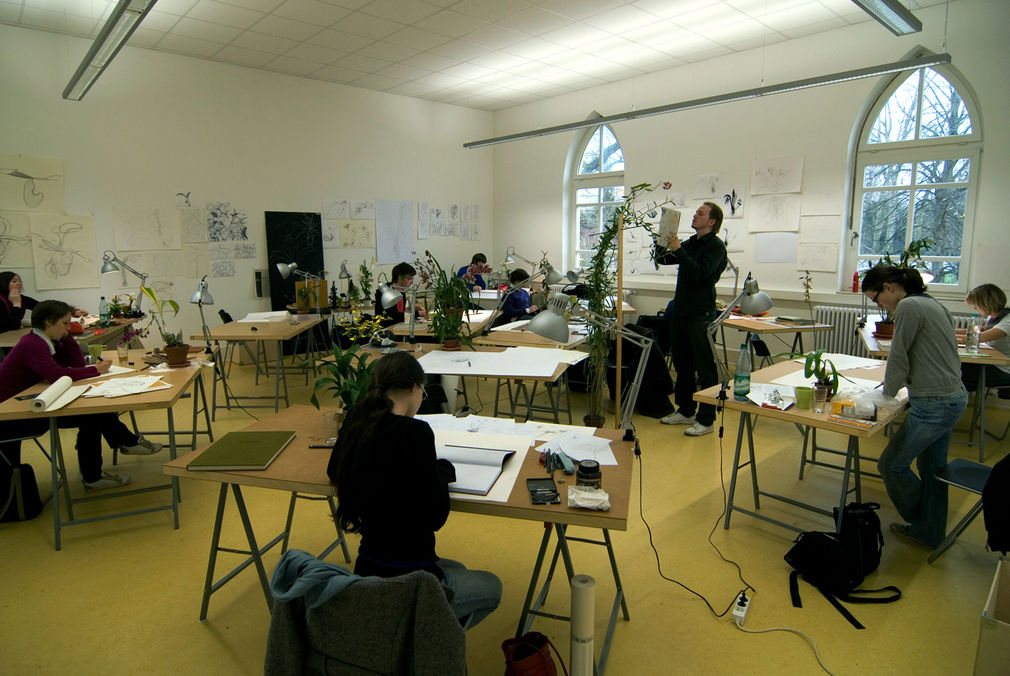
Orchids – research and drawing
Orchids
research and drawing (2008)
This drawing seminar took place from February 18-29, 2008 at Frankfurt’s Palmengarten. The students were tasked with examining a single kind of orchid through drawing for the entire duration of the seminar. A place to work, various orchids and horticultural assistance were supplied by Palmengarten Frankfurt. The students were granted free access to the public gardens and to the nurseries and laboratory closed to the general public.
Compact seminar Drawing II, in cooperation with Palmengarten Frankfurt

